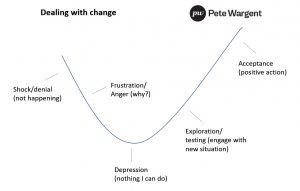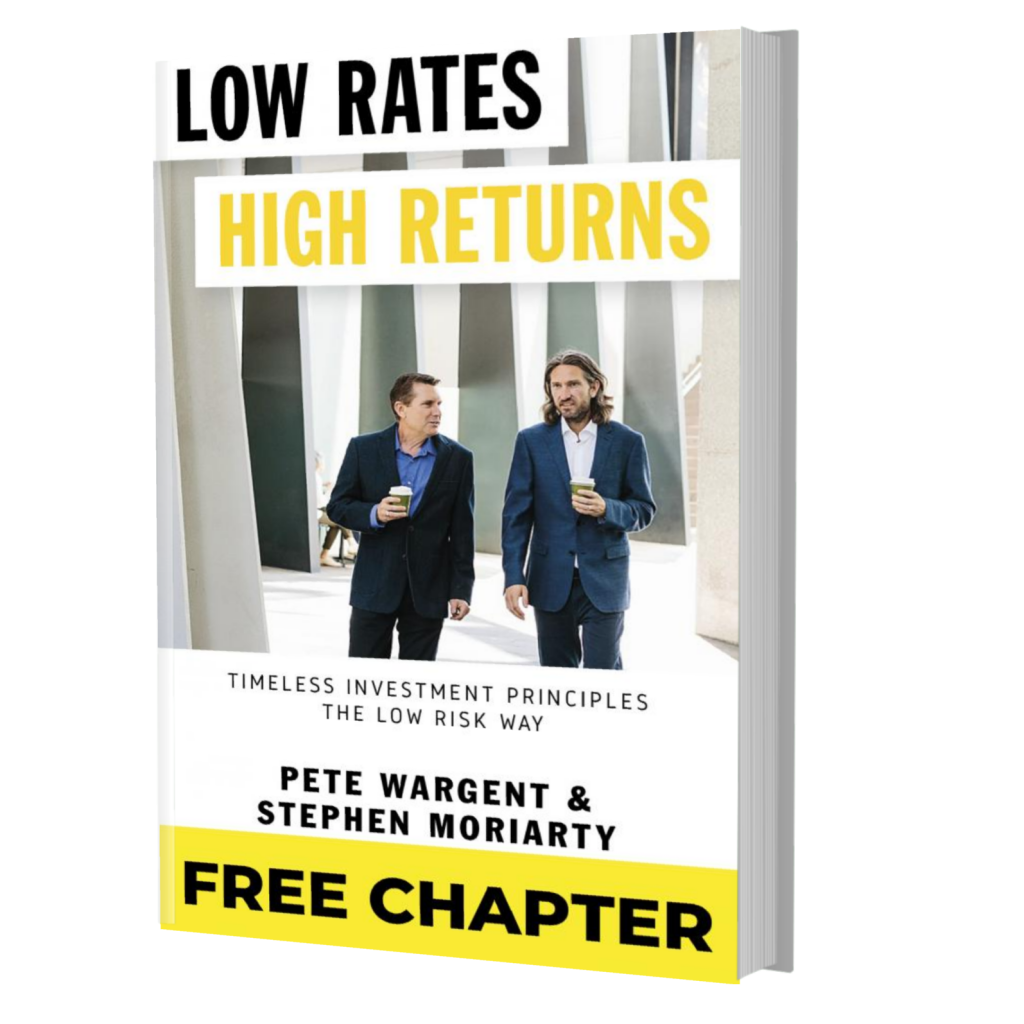New horizons
When I was 13 my parents told me we’d be moving house to another part of the country – my Dad’s job was in probation and corrective services and he had to relocate for work – and this would mean a change of school for me, possibly to a selective school requiring an entry exam.
High school isn’t a great time to be losing friends and I wasn’t remotely happy, though I tried to put a brave face on it.
Looking back now, I wouldn’t change anything, because everything that has happened since has led me to today.
After the initial upset, the process of getting to the point of acceptance was quite a slow one, but eventually I found new friends, new interests, & ways to thrive in the shifting circumstances.
Change curve
The Kübler-Ross model was first conceived in the 1960s and was originally intended to deal with the morbid subjects of death & dying.
Since all change involves a loss of sorts, variations on the model are often used by management teams or small business owners to understand how teams are coping with new projects or periods of disruption.
The model might just as easily apply to adverse business or market conditions, the failure of a relationship, or the loss of a job or key customer/contract.

The Kübler-Ross model shows how the initial reaction to change can be a refusal to acknowledge it, followed by fury or vexation, and then a resigned feeling of ‘what’s the point?’.
The challenge is to move through the negativity to begin exploration and testing solutions, and ultimately an acceptance of the new reality.
The model is far from perfect and deliberately over-simplified, since progress in life is rarely so predictable or linear (you might appear to be making progress and then fall backwards, for example).
Moreover, if you are managing a team through a period of transition, it’s likely that the members of the group will be scattered at various points along the journey.
Change is inevitable
Despite the obvious shortcomings, the model can be a useful roadmap and reminder that we go through similar stages as life throws up obstacles, so here are 3 considerations when working through periods of turbulence:
(i) Be aware – everyone experiences a range of emotions when going through an adjustment – this is normal!;
(ii) Try not to get stuck – while each of us responds to an adapting outlook in our own way, to move forward it’s important not to become permanently stuck at one of the stages; and
(iii) Towards positive action – if you can work through the stages of the change curve, then you can ultimately blossom & reap the benefits of change.
Change is often a good thing: for one thing, it means you’re alive!
It’s also inevitable, because even where the environment doesn’t change, people do.
Like a train pulling into a station you can’t halt the arrival of change; you need to clamber aboard, and move on to life’s next stop.
We will all experience challenges and setbacks in life – that’s a given – so it stands to reason that champions often embrace change and run with it, rather than continually trying to fight back.






